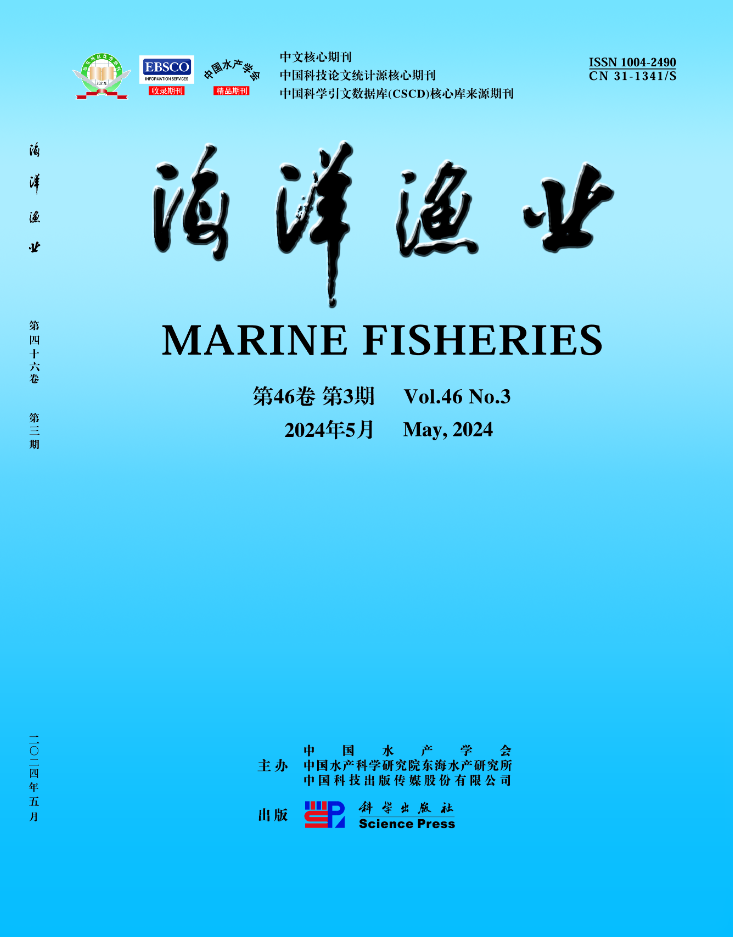Jaring Kekop (Gillnet) Fishery and Its Sustainability Level in Ranau Lake, South Sumatera
引用次数: 0
Abstract
Fishing activity to catch hampala (Hampala macrolepidota) using gillnet in the Ranau Lake has been quite intensive. However, there is a type of net developed by fishers to catch hampala in the same waters, namely “jaring kekop.” The existence of this net will increase the intensity of fishing in Ranau Lake which is already high, thus affecting the availability of stocks. The purpose of this research is to describe technical and biological characteristic of kekop net and to analyze the sustainability of kekop net fishery to catch hampala in Ranau Lake, South Sumatera. Data was collected by field survey method through direct interviews with fishers, observation and measurement of fishing unit, and participated in the fishing operation trips. The result showed that the jaring kekop used by fishers in Ranau Lake can be classified into the set gillnet with slightly different operation method from the common set gillnet. The SPR (spawning potential ratio) analysis of hampal fish obtained a value of 72% or > 40%, which means that the average fish caught is gonad ripe or fit to catch (SL50 > Lm). The sustainability values of the jaring kekop fishery were 51.4 for technical aspect, 6.5 for biological aspect, and 65.2 for social-economic aspect. From these sustainability values, it can be seen that the jaring kekop fishery in Lake Ranau is sustainable enough. Key words: jaring kekop, hampala fsih, characteristic, sustainability, Ranau Lake南苏门答腊拉瑙湖刺网渔业及其可持续性水平
在拉瑙湖,利用刺网捕捞汉帕拉(hampala macrolepidota)的捕捞活动相当密集。然而,渔民们开发了一种网来捕捉同一水域的海帕拉,即“jaring kekop”。这张网的存在将增加拉瑙湖已经很高的捕鱼强度,从而影响到鱼群的供应。本研究的目的是描述kekop网的技术和生物学特性,并分析kekop网捕捞南苏门答腊岛拉瑙湖罕帕拉鱼的可持续性。采用现场调查的方法,通过对渔民的直接访谈、对捕捞单位的观察测量、参与捕捞作业行程等方式收集数据。结果表明,拉瑙湖渔民使用的刺网可归类为套刺网,其操作方法与普通套刺网略有不同。产卵潜力比(SPR)分析结果为72%或> 40%,即平均捕获的鱼性腺成熟或适合捕获(SL50 > Lm)。其技术可持续性值为51.4,生物可持续性值为6.5,社会经济可持续性值为65.2。从这些可持续性值可以看出,Ranau湖的jaaring kekop渔业具有足够的可持续性。关键词:贾林柯科普,汉帕拉湖,特色,可持续性,拉瑙湖
本文章由计算机程序翻译,如有差异,请以英文原文为准。
求助全文
约1分钟内获得全文
求助全文
来源期刊
自引率
0.00%
发文量
4336
期刊介绍:
“Marine Fisheries”started publication in 1979, it mainly covers original research papers and reviews on basic theories and applications of aquaculture and fisheries, including marine biology, mariculture and reproduction, aquatic diseases and prevention, nutrition and feed of aquatic organisms, fishery ecology and environmental protection, development and conservation of marine fishery resources, fishing tools and methods, preservation and comprehensive utilization of aquatic products, fishery machinery and instruments.

 求助内容:
求助内容: 应助结果提醒方式:
应助结果提醒方式:


